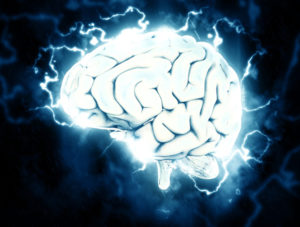The 6 Concussion Symptoms You Should NOT Ignore

Brain injuries are much in the news — and for good reason. Recent research shows that even a single concussion can have long term health consequences, such as structural brain damage. Brain damage can lead to depression and anxiety as well as a host of other symptoms including chronic headaches, memory issues, inability to control emotions, and lifelong concentration problems.
In a recent U.S. survey of more than 3,000 men and women, 23% said they had suffered at least one concussion during their lives. Researchers believe that percentage is low, as many symptoms are subtle or develop over time, making a diagnosis difficult.
“Another problem,” says Leanne O’Neil, owner of INDY Neurofeedback, “is there is no definitive, conclusive exam to diagnose a concussion. It often doesn’t show up on an MRI or a CT scan, so recognizing the symptoms is extremely important so you can get needed help as soon as possible to minimize the risk of lasting consequences.”
Here’s what to look for. Chances are you have a concussion if:
- You black out. If you black out even for a second or two, chances are you have a concussion, especially if you are disoriented and don’t remember how you got on the ground. Strangely though, being knocked out doesn’t mean you have a more severe concussion than if you weren’t unconscious.
- You have a headache that won’t go away. A pressure headache that won’t go away or gets worse when you lie down means blood flow to the brain has been affected. Doing mental or physical activities that bring more blood into the brain will also cause pain.
- You have trouble focusing your eyes. Double or blurry vision is a symptom, as is light sensitivity.
- You feel dizzy, off balance or feel sick to your stomach. If your head is spinning and you’re stumbling around, those are red flags. Even more subtle symptoms like feeling unsteady on your feet can indicate a brain injury.
- You feel foggy or confused. Having trouble remembering things, being unable to concentrate, or having more trouble than usual organizing tasks, solving problems, or making decisions are all signs that you’ve injured your brain.
- You feel lethargic and listless, or anxious and irritable. It takes a lot of energy to heal an injured brain. It’s very common to feel drowsy, lethargic, or irritable.
If you believe you or someone you care about has a concussion, take it seriously and trust your instincts.
Rest physically and cognitively during the first 48 hours or longer, depending on how you feel. Find someone to stay with you if you live alone, in case you develop symptoms of a life-threatening hematoma, characterized by loss of consciousness, inability to awaken, and/or severe headaches.
“Bottom line,” cautions Leanne, “If you’ve hit your head hard and have any of the symptoms listed above, chances are you have a concussion and should contact your doctor.”
INDY Neurofeedback can help re-train brains which suffer the lingering effects of concussion – even years after the injury. But first, you must recognize the symptoms and get medical help. The sooner, the better.



 Do you remember watching the video of that first passenger plane crashing into the World Trade Tower over and over again the day of September 11th, 2001? Most of us think that’s what we saw as we learned of the attacks. But most of us have remembered this incorrectly.
Do you remember watching the video of that first passenger plane crashing into the World Trade Tower over and over again the day of September 11th, 2001? Most of us think that’s what we saw as we learned of the attacks. But most of us have remembered this incorrectly. Football and its relationship to brain health is still very much in the news. In fact, a new study found youth and high school football players who were hit in the head frequently showed signs of damage to their brain development after just one season of playing the sport!
Football and its relationship to brain health is still very much in the news. In fact, a new study found youth and high school football players who were hit in the head frequently showed signs of damage to their brain development after just one season of playing the sport! Because of the way the brain is housed in the cranium, explains Leanne O’Neil of INDY Neurofeedback, an impact from almost any direction can cause damage. Although the brain is incredibly resilient, is it also quite susceptible to injury.
Because of the way the brain is housed in the cranium, explains Leanne O’Neil of INDY Neurofeedback, an impact from almost any direction can cause damage. Although the brain is incredibly resilient, is it also quite susceptible to injury. We’ve long heard about head trauma due to playing rough sports like rugby and football. But what about soccer? Of particular concern is “heading”, or repeatedly using the head to forward the ball. Studies have found that frequent heading is a common and under-recognized cause of concussion symptoms and may actually cause more damage than the impact from unintentional head-to-head collisions.
We’ve long heard about head trauma due to playing rough sports like rugby and football. But what about soccer? Of particular concern is “heading”, or repeatedly using the head to forward the ball. Studies have found that frequent heading is a common and under-recognized cause of concussion symptoms and may actually cause more damage than the impact from unintentional head-to-head collisions.